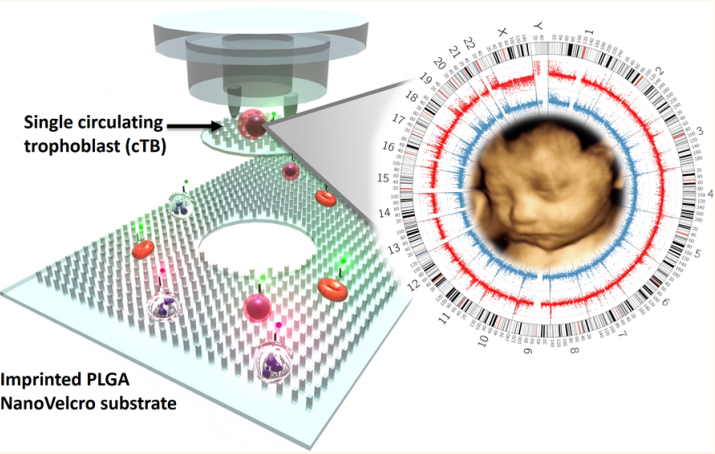
(Credit: American Chemical Society)
Many pregnant women undergo some form of prenatal testing before their children are born. The information that expectant mothers gain from these tests vary, from the baby’s gender to genetic defects. But the tests are often invasive, which can potentially harm the fetus and the mother. Now, one group reports in ACS Nano that they have developed a device that provides sensitive results, but in a less invasive way: a blood test.
Current prenatal tests, such as amniocentesis and chorionic villus sampling are accurate, but are also invasive and increase the risk of a miscarriage. Some less invasive tests that could be safer are in development. For example, researchers are working on ways to detect fetal DNA in a mother’s blood, but that genetic material is typically found in short pieces and in very small quantities.
Whole fetal cells containing entire genomes also circulate in a mother’s blood. These rare, fragile cells could provide a wealth of information about a fetus’ health, but so far, no method is ideal for capturing them. Hsian-Rong Tseng, Li-Ching Chen, Angela Chen, Margareta Pisarska, Ming-Song Tsai and colleagues previously reported a ‘NanoVelcro’ microchip assay for detecting rare circulating tumor cells. So, in their new paper, they wanted to see if this assay also would work with rare circulating fetal cells.
The researchers developed a new class of NanoVelcro microchips that were prepared with a nano-imprinting fabrication process, which made them more reproducible and faster to make than the previous chips. To specifically capture the fetal cells, the team attached an antibody to a marker on the cells’ surface. When they tested the blood of 15 pregnant women, they found that the method could enrich for fetal cells. It also accurately determined the sexes of the fetuses, as well as genetic conditions that were previously diagnosed by other methods in nine of the fetuses.




